If you’re an avid gun enthusiast or someone interested in firearm mechanics, understanding the parts of a bolt carrier group is essential knowledge. A bolt carrier group (BCG) is a critical component of any semi-automatic or automatic firearm, including rifles like the AR-15. But with so many parts involved, it can feel overwhelming to decipher their functions and significance.
In this comprehensive guide, we will demystify the intricate components that make up a bolt carrier group, ensuring you have a clear understanding of how it all works together. From the bolt and carrier itself to the firing pin, gas key, and more, we’ll break down each part’s purpose and importance. Dive deep into the world of bolt carrier groups and gain valuable insight into the inner workings of your firearm.
Related: The Ultimate AR-15 Parts Breakdown: Exploring the Key Components and Their Functions
Whether you’re a novice gun owner or an experienced shooter, this guide will equip you with the knowledge necessary to appreciate the engineering behind these essential components. Gain a better understanding of the mechanics that contribute to the smooth operation of your firearm. Get ready to master the parts of a bolt carrier group with our ultimate guide!
Parts of a bolt carrier group
The bolt carrier group is the heart of any semi-automatic or automatic firearm, responsible for the cycling and firing of ammunition. It is a complex assembly made up of several interconnected components, each serving a specific purpose. Understanding the individual parts and their functions is crucial for maintaining, troubleshooting, and optimizing the performance of your firearm.
At the core of the bolt carrier group is the bolt, which is responsible for locking the chamber and extracting spent cartridges. The bolt carrier, on the other hand, houses the bolt and facilitates the cycling of the action. The gas key, gas rings, and cam pin work together to ensure smooth operation and reliable functioning. The firing pin, buffer, and buffer spring also play crucial roles in the firing sequence and recoil management.
By familiarizing yourself with the various parts of the bolt carrier group, you’ll gain a deeper appreciation for the engineering and precision that goes into the design of modern firearms. This knowledge will not only help you maintain your weapon more effectively but also enable you to troubleshoot any issues that may arise. Let’s dive deeper into the individual components and explore their unique functions.
Bolt carrier group materials and finishes
The materials and finishes used in the construction of a bolt carrier group are crucial to its performance and longevity. Manufacturers carefully select the appropriate materials and coatings to ensure the bolt carrier group can withstand the rigors of regular use, harsh environments, and the high-pressure forces involved in the firing process.
The most common material used for the bolt carrier group is steel, specifically high-quality alloy steel. This material provides the necessary strength, durability, and dimensional stability to handle the demanding conditions of firearm operation. The bolt and carrier are often made from a heat-treated, high-carbon steel alloy, which offers exceptional resistance to wear, deformation, and breakage.
In addition to the base material, the bolt carrier group components may undergo various surface treatments and coatings to enhance their performance and appearance. Common finishes include:
- Phosphate coating: Also known as “black oxide” or “parkerizing,” this finish provides a protective layer against corrosion and wear, while also giving the parts a distinctive matte-black appearance.
- Nickel-boron coating: This specialized coating offers exceptional lubricity, wear resistance, and corrosion protection, making it a popular choice for high-end bolt carrier groups.
- Hard chrome plating: This durable finish not only protects the underlying metal but also imparts a sleek, shiny appearance to the bolt carrier group components.
Related: Exploring the Benefits of a Chrome Bolt Carrier Group for Your Firearm
The choice of materials and finishes can have a significant impact on the overall reliability, durability, and performance of the bolt carrier group. Manufacturers carefully consider these factors to ensure their products meet the demanding requirements of modern firearms.
Understanding the bolt
The AR-15 bolt is the heart of the bolt carrier group, responsible for the critical tasks of locking the chamber, extracting spent cartridges, and facilitating the loading of new ammunition. This intricate component is engineered with precision to withstand the immense pressures and forces generated during the firing process.
At the core of the bolt is the locking lugs, which are the protruding teeth or flanges that engage with the corresponding locking recesses in the barrel extension. When the bolt is fully closed, these locking lugs create a secure, gas-tight seal, preventing the high-pressure gases from escaping the chamber during firing. The number and design of the locking lugs can vary depending on the specific firearm’s design, but they all serve the same essential purpose of ensuring reliable and safe operation.
The extractor is another crucial component of the bolt, responsible for gripping the rim of the spent cartridge and pulling it from the chamber during the cycling process. This extraction process is critical, as it allows the spent case to be ejected from the firearm, making way for the next round to be loaded. The extractor is typically a spring-loaded claw that fits into a corresponding groove on the cartridge rim, providing a secure grip during the extraction phase.
Exploring the bolt carrier
The bolt carrier is the larger, outer component that houses the bolt and facilitates the cycling of the action. It is responsible for transferring the energy from the gas system (in gas-operated firearms) or the recoil spring (in direct impingement systems) to the bolt, enabling the cycling of the action and the loading of a new round.
The bolt carrier is designed with a distinctive profile, featuring a cylindrical body and a rectangular rear section. The cylindrical portion of the carrier fits snugly within the upper receiver, guiding the carrier’s movement and ensuring a smooth, consistent cycling of the action. The rectangular rear section, often referred to as the “tail,” provides a surface for the buffer and buffer spring to interact with, absorbing the recoil forces and returning the carrier to the forward position.
One of the critical features of the bolt carrier is the cam path, a machined groove or track that guides the cam pin. This cam pin, in turn, interacts with the bolt, causing it to rotate and lock or unlock the chamber as the carrier cycles. The precise design and machining of the cam path are essential for ensuring reliable and consistent operation, as any irregularities or deformations in this area can lead to malfunctions or reduced performance.
Gas key and gas rings
The gas key and gas rings are essential components that work together to facilitate the cycling of the action in gas-operated firearms, such as the AR-15 platform. These parts play a crucial role in transferring the high-pressure gases generated during the firing process to the bolt carrier, providing the necessary energy to cycle the action and load the next round.
The gas key is a small, protruding component on the top of the bolt carrier that connects to the gas tube. When the firearm is discharged, the high-pressure gases travel through the gas tube and into the gas key, pushing the bolt carrier rearward. This rearward movement of the carrier, in turn, extracts the spent cartridge and cocks the hammer, preparing the firearm for the next shot.
The gas rings, on the other hand, are thin, circular metal rings that fit into grooves on the bolt. These rings create a gas-tight seal between the bolt and the chamber, preventing the high-pressure gases from escaping and ensuring that the energy is efficiently transferred to the bolt carrier. The gas rings play a crucial role in maintaining the reliability and consistent cycling of the action, as any leaks or gaps can lead to malfunctions or reduced performance.
Cam pin and firing pin
The cam pin and firing pin are two additional critical components that work in tandem to ensure the proper functioning of the bolt carrier group.
The cam pin is a small, cylindrical pin that fits into a corresponding hole in the bolt carrier and interacts with the cam path machined into the bolt. As the bolt carrier moves rearward and forward during the cycling process, the cam pin follows the cam path, causing the bolt to rotate and lock or unlock the chamber. This precise interaction between the cam pin and the cam path is essential for the reliable and consistent operation of the firearm.
The firing pin, on the other hand, is responsible for striking the primer of the cartridge, initiating the combustion of the propellant and the subsequent firing of the weapon. The firing pin is housed within the bolt and is designed to protrude slightly beyond the face of the bolt when the action is fully closed. When the hammer or striker mechanism is released, it strikes the rear of the firing pin, driving it forward to impact the primer and fire the round.
The design and material selection of the cam pin and firing pin are critical, as they must be able to withstand the high stresses and forces involved in the firing process. Manufacturers often use high-quality, heat-treated steel alloys to ensure the durability and reliability of these components.
Buffer and buffer spring
The buffer and buffer spring are the final components in the bolt carrier group that play a crucial role in managing the recoil forces and ensuring the smooth cycling of the action.
The buffer is a cylindrical component that fits into the rear of the bolt carrier, providing a surface for the buffer spring to push against. When the bolt carrier group moves rearward during the firing and cycling process, the buffer absorbs the recoil forces, helping to dampen the felt recoil experienced by the shooter.
The buffer spring, on the other hand, is a coiled spring that sits between the buffer and the rear of the receiver. As the bolt carrier group moves rearward, the buffer spring compresses, storing energy. When the bolt carrier group reaches the end of its rearward travel, the buffer spring then expands, pushing the carrier back forward and loading the next round into the chamber.
The combination of the buffer and buffer spring is essential for maintaining the reliable and consistent cycling of the action, as well as reducing the felt recoil experienced by the shooter. The specific weight and spring tension of these components can be adjusted to fine-tune the performance of the firearm, depending on the shooter’s preferences and the intended use of the firearm.
Cleaning and maintaining your bolt carrier group
Proper cleaning and maintenance of the bolt carrier group are crucial for ensuring the reliable and consistent operation of your firearm. Over time, the components of the bolt carrier group can become fouled with carbon, dirt, and other debris, which can lead to malfunctions, increased wear, and even potential damage to the firearm.
To keep your bolt carrier group in top condition, it’s important to follow a regular cleaning and maintenance routine. Begin by disassembling the bolt carrier group, carefully removing each component and inspecting them for any wear, damage, or abnormalities. Use a high-quality solvent and cleaning tools to thoroughly remove any accumulated carbon, powder residue, or other contaminants from the surfaces of the bolt, carrier, gas key, and other parts.
Pay special attention to the gas key, ensuring that the gas passage is clear and unobstructed. Similarly, inspect the gas rings for any wear or damage, and replace them if necessary. The cam pin and firing pin should also be checked for any signs of wear or deformation, and replaced if they no longer function as intended.
Once the components have been cleaned and inspected, it’s time to reassemble the bolt carrier group. Apply a thin, even coat of high-quality lubricant to the moving parts, such as the bolt, carrier, and cam pin, to ensure smooth operation and reduced wear. Avoid over-lubricating, as excessive oil can attract and hold additional dirt and debris, potentially leading to malfunctions.
By following a consistent cleaning and maintenance routine, you can ensure that your bolt carrier group remains in optimal condition, contributing to the overall reliability and performance of your firearm.
Conclusion and final thoughts
In conclusion, the bolt carrier group is a complex and essential component of any semi-automatic or automatic firearm, playing a crucial role in the cycling and firing of ammunition. By understanding the individual parts that make up the bolt carrier group and their respective functions, you can gain a deeper appreciation for the engineering and precision that goes into the design of modern firearms.
Whether you’re a novice gun owner or an experienced shooter, mastering the intricacies of the bolt carrier group will not only help you maintain your firearm more effectively but also enable you to troubleshoot any issues that may arise. By regularly cleaning and maintaining the components of the bolt carrier group, you can ensure the reliable and consistent operation of your firearm, allowing you to enjoy the sport of shooting with confidence.
Remember, the bolt carrier group is the heart of your firearm, and understanding its inner workings is essential for getting the most out of your shooting experience. Dive deeper into the world of bolt carrier groups and unlock the full potential of your firearm.
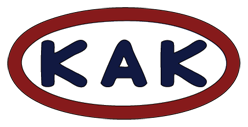
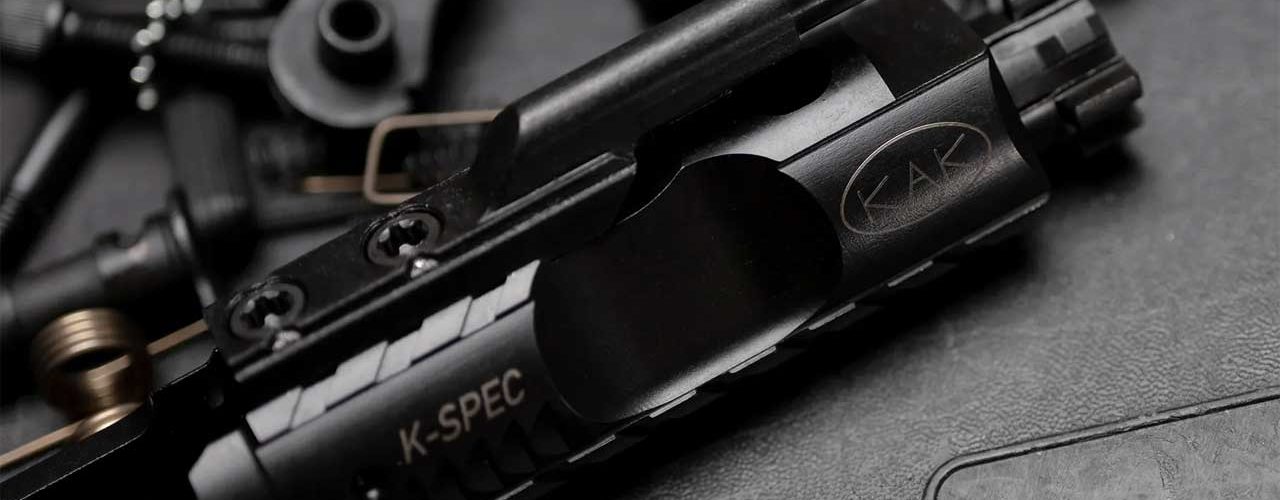


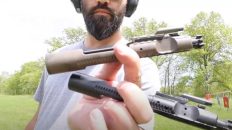
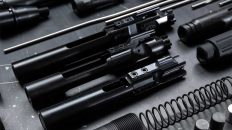
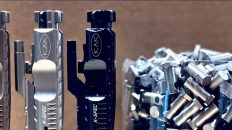
Add comment